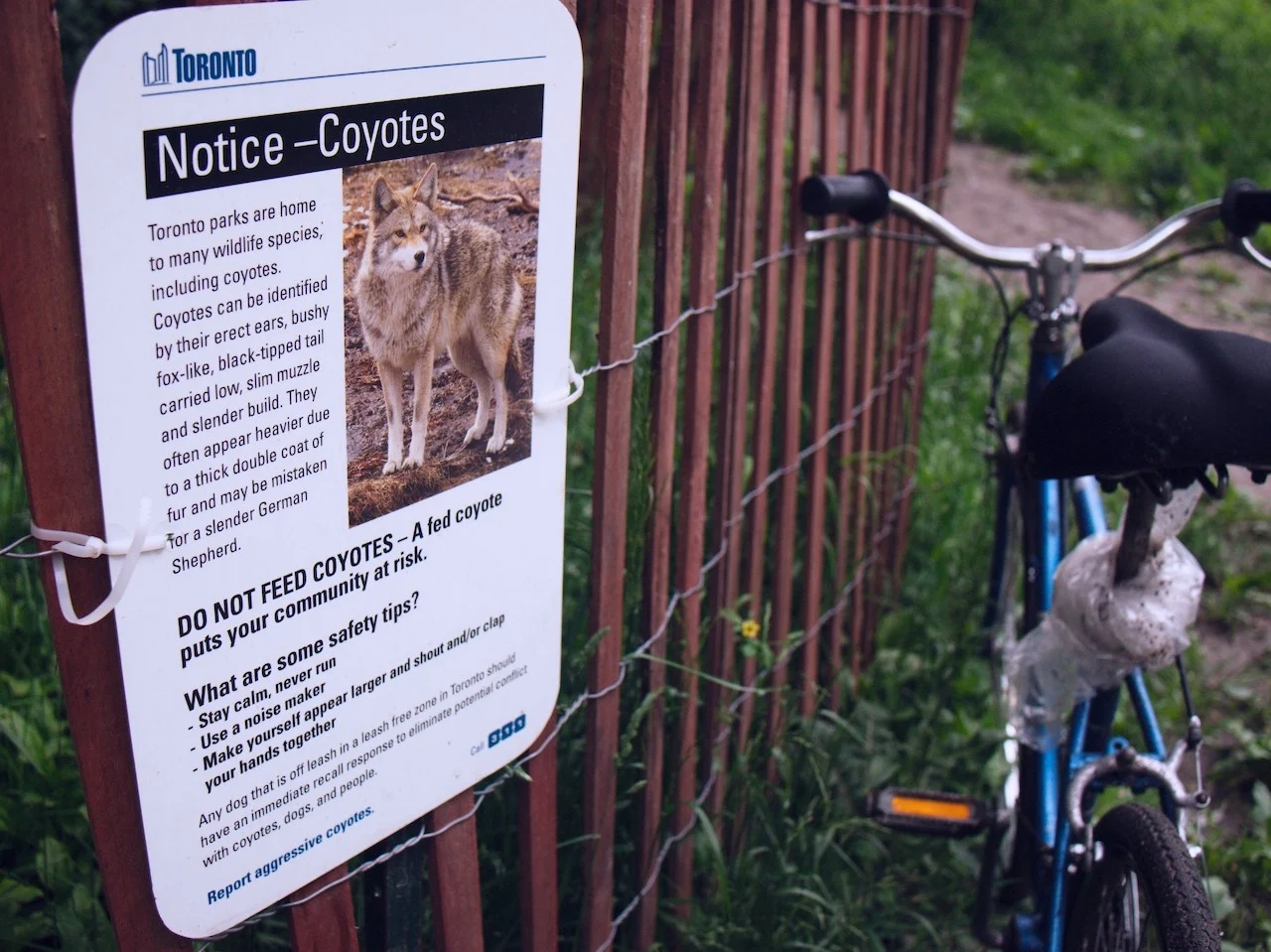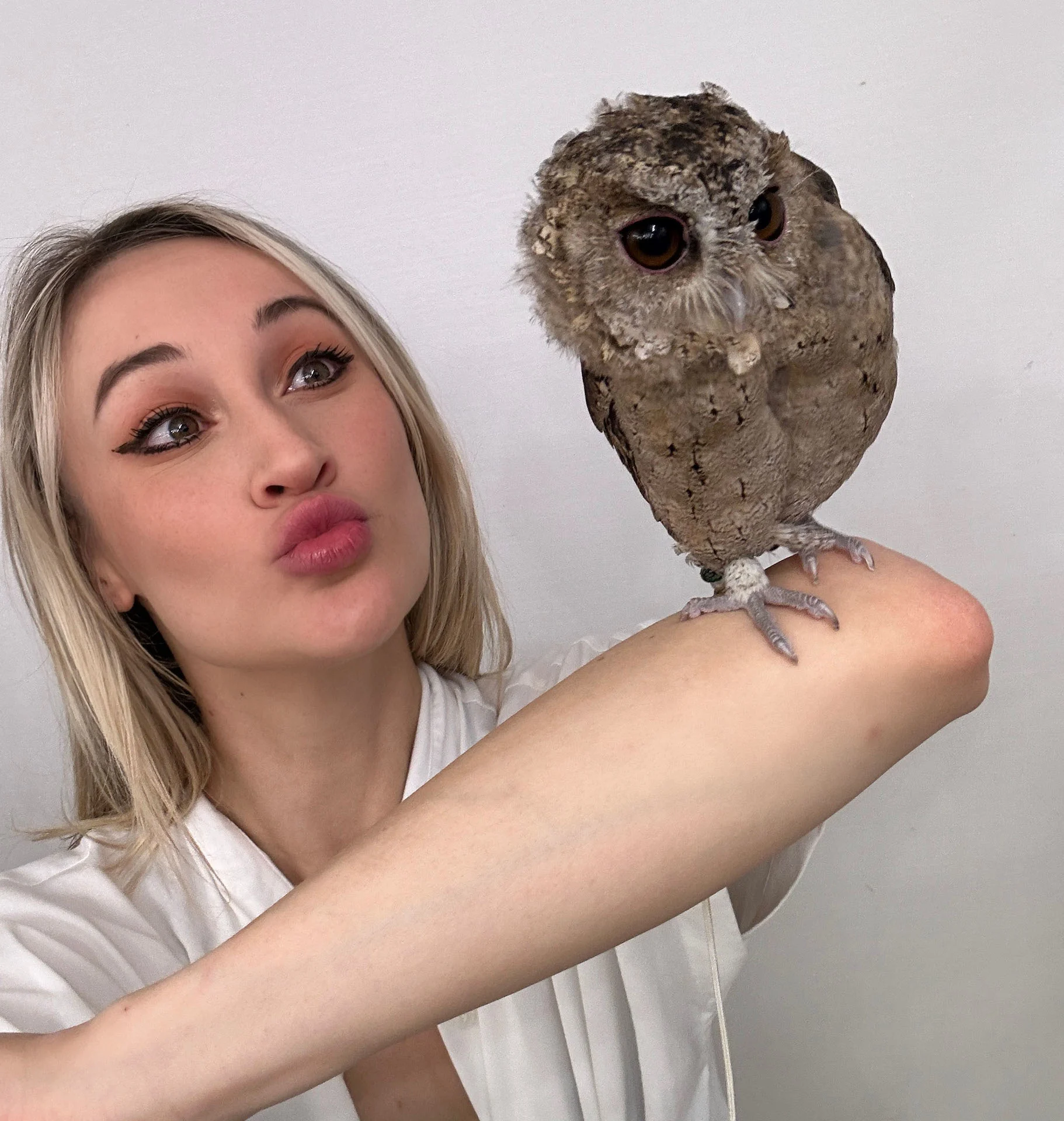
Coyotes on patrol: What it really means when you're 'followed'
Spotting a coyote hanging around your location while outdoors may be a bit unnerving, but understanding their behaviour is key to safely coexisting with these animals in an urban setting.
Has a coyote ever “followed” you and your dog on a walk?
It may have felt unsettling, like you were being stalked, but experts say it’s unlikely you were in any sort of danger.
Rather, the animal was probably just “escorting” you through its territory.
SEE ALSO: Spotted a coyote? Here's how we can safely coexist
“This is natural, protective behaviour. [The] coyote is doing everything it can to communicate to the person, especially with the dog in tow, to move away,” explains Lesley Sampson, co-founding, executive director of the not-for-profit wildlife organization, Coyote Watch Canada.
“We understand and appreciate how an individual might think that they're being stalked or followed, but it's very important to look at what time of year it is right now. Canids like coyotes are either preparing to have their young ones, or they've already had young ones.Their eyes are not open, yet, and their ears are down. They're very vulnerable. [The mother and father] will do everything in their power to protect the young ones.”

(Getty Images)
Off-leash dogs increase chance of coyote conflicts
Coyotes are known to be excellent parents, according to Sampson. With pups in the mix, they’re far more likely to see you and your dog as predators than prey––especially if your dog is roaming wild.
“When dogs are chronically off-leash, it creates really big issues between the dogs and people that love and care about them, and also the coyote family,” says Sampson. “Dogs create this high level of stress when there [are] pups in a den or rendezvous site later in the year, so that escorting behaviour is really [just] natural behaviour."
In fact, rampant, off-leash dogs are one of several factors blamed for a recent uptick in coyote attacks on dogs in some downtown Toronto neighbourhoods.
Experts cite the displacement of coyote as even more important, pointing to the destruction of habitats at Ontario Place, as well as throughout Liberty Village and Fort York due to condo development.

Toronto coyote notice. (Madellina Bird/Submitted to The Weather Network)
“These animals haven't decided to come in. They've been driven in, so it's not their fault. They're just doing what nature is telling them to do,” says Lesley Benchina, a registered veterinary technician at Liberty Village Animal Hospital.
“The sad thing is, because the coyotes are coming closer into the city, they’re losing their inhibition and fear of people. We're so dense in population right here in Liberty Village, and in Toronto, so…we just have to make sure that when we are going out with our pets, we just take extra precautions.”
Use humane hazing tactics to scare off approaching coyote
On the rare occasion that one does come a bit too close for comfort, humans are encouraged to try humane hazing: Shouting, waving their arms or even using an airhorn.
“Coyotes like to be out when it starts to get darker, around dusk time. So, if you're going to be going out around dusk time, make sure your pet is on a leash. Make sure you have a flashlight, as well. Air horns are a great thing to try,” says Benchina. “I know you might wake up your neighbours, but if it comes down to your pet being attacked versus you making a blast…well, that might help save your pet, and also prevent them from getting taken.”
Benchina says that little dogs are generally the most vulnerable to coyote attacks because they can look like prey items. But any-sized dog (or person) is more likely to witness coyote behaviour they perceive as “threatening” in April and May.
“Right now, they're in super-protective mode. They're out more in groups. You'll see them,” she says. “They're very protective when they're in their denning mode around people. So, they might not be attacking your pet to necessarily use as prey, they might be just trying to protect their den from you and your pet being in that area.”
In addition to protecting their offspring, coyotes may also sometimes follow people they’ve come to associate with snacks. That is why city officials ask that you never feed them or leave easily accessibly food scraps outdoors. That can lead to an increase in human-wildlife conflicts.
“Sometimes, if people are feeding coyotes, you might see a behaviour where a coyote may present themselves with a food demand,” explains Sampson. “So they might follow somebody hoping to get a handout. And this is where we remind folks. Please, if you're out in the environment and you come across any food resources left on a trail, in a park, by picnic benches or anywhere…please report that because that can escalate.”
Off-leash dogs increase chance of coyote conflicts
Animal experts continue to stress that coyotes aren’t inherently bad or dangerous. By nature, they’re curious, cautious and highly intelligent. In fact, as urban sprawl pushes deeper into natural habitats, coyotes are learning to live among us––and history shows us that it is possible for people to coexist alongside urban canids––as long we’re smart and respectful.

(Pexels)
“If you look at across North America, there's so many communities that are doing absolutely wonderful, coexisting with different wildlife species, including canids like foxes, coyotes and even wolves,” says Sampson.
“I think we, as cohabitants in this more-than-human world, have to appreciate that all wildlife have the potential to bite us or hang around our place if we don't keep it tidy and remind ourselves not to feed the wildlife," says Sampson.
"So, we contribute as a collective in creating a community that respects wildlife and appreciates the wildlife--the rich, beautiful community members that we have, and we do it together, working towards that common goal of coexistence.”
WATCH: Toronto is having a serious coyote problem, what the city is doing about it
Thumbnail courtesy of Benjamin Farren/Pexels.
